Mitsubishi ASC Service Required Warning – System Disabled
A Mitsubishi ASC Service Required warning is displayed on a Mitsubishi vehicle’s dashboard, indicating an issue with the ASC or Active Stability Control system. ASC, or Active Stability Control, is a safety driving feature that uses sensors to monitor the vehicle’s yaw and lateral acceleration rate and the steering angle. If the car notices a slip in traction, brakes are automatically applied to the individual wheels to help keep the vehicle stable.
The “ASC Service Required” message indicates a system problem that needs to be addressed. If the Mitsubishi vehicle displays ASC system service required or ASC System Disabled, don’t panic. This guide will explain what common problems trigger the ASC system disabled warning. If your Mitsubishi ASC light stays on all the time, it means there is a problem with the Active Stability Control (ASC) or Anti-lock Brake System (ABS).
What does ASC mean on a Mitsubishi vehicle?
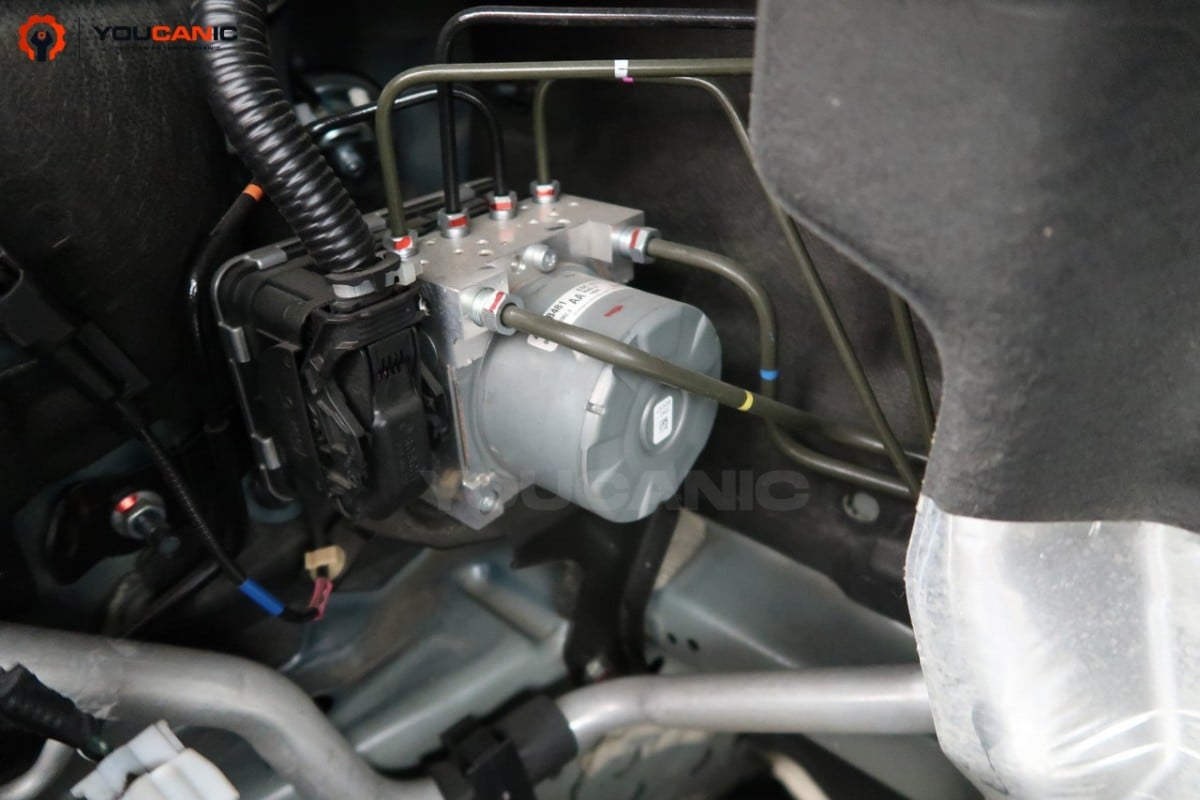
Mitsubishi Active Stability Control (ASC) system combines three functions:
- Anti-lock Brake System
- Traction Control
- Stability Control
ASC monitors inputs like wheel speed and brake pressure and adjusts engine power accordingly when loss of traction is detected. On a Mitsubishi, ASC ensures sufficient traction and control. ASC helps keep you safe in slippery conditions like rain or snow.
You know when the traction control is kicking in because the little ASC light on the instrument panel blinks. A flashing ASC light indicates an unsafe amount of wheel slip, and you should slow down. The “ASC Service Required” message indicates a problem with the system that needs to be addressed. Various factors can cause this problem; some of the common causes are:
- Sensor failure: The ASC system uses various sensors to monitor the vehicle’s stability. If any of these sensors fail, it can cause the system to malfunction.
- Control module failure: The control module is the electronic component that manages the ASC system. If the control module fails, it can prevent the system from functioning correctly.
- Wiring issues: A complex wiring network connects The ASC system to various vehicle components. If the wiring is damaged, the system can malfunction.
- Low brake fluid: If the brake fluid level is low, it can cause the system to malfunction and trigger a warning message.
- Software issues: An error in the software that controls the ASC system can cause the system to malfunction.
- A faulty ABS wheel speed sensor is the most common problem that triggers a Mitsubishi’s ASC light to stay on.
- A faulty ABS pump,
- A weak battery,
- A blown a fuse,
- Defective steering angle sensor.
The ASC Service Required light could mean one of the ABS wheel speed sensors is impaired. If the ASC Service light is on, remember that your ABS capability could be reduced or switched off until it is repaired.
The wires from the ABS sensor up through the wheel hub could be corroded or broken. This is possible if you live in an area with harsh winters, given how much salt gets used on the roads. The ASC Service Required light in some cars means that traction, stability, ABS, and 4WD are disabled.
Symptoms
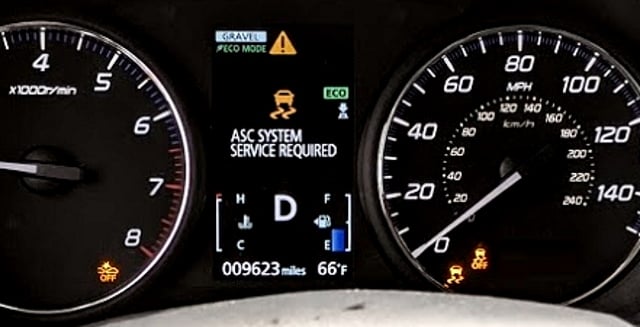
If the ASC system is defective, the vehicle will warn the driver with an ‘ASC system service required’ warning message on the dashboard, or the ASC light will stay on. It is essential to drive moderately if the ASC light stays on. When the ASC light is on, stability control is disabled, affecting handling and overall driving performance.
- The ASC Service Required light comes on.
- When driving in unsafe conditions, the ASC light does not blink.
- The ABS doesn’t engage under a panic stop.
- You have a loss of traction due to the 4WD being disengaged.
- ASC System Service Required — message in the vehicle display and the ASC warning light illuminated on the dashboard.
- Noticeable wheelspin — during aggressive accelerations from standstills. This will also happen when going up steep inclines with poor traction.
- Loss of traction — when going through tight corners at higher speeds. Depending on driving conditions, the vehicle might either oversteer or understeer.
- The engine may not start—no cranking action after turning the key. This will often become an occasional issue that triggers the ASC warning message.
- An inoperable 4WD system —on vehicles equipped with permanent all-wheel-drive systems.
- Cruise control doesn’t work. — The cruise control can no longer be enabled.
- Limp mode / ASC Off — Transmission will no longer change gears. Typically, it will get stuck in second gear.
- Beeping for several minutes when you start to drive.
- 4WD light flashing on and off.
If the ASC service required message comes up on the dashboard, turn off the engine, remove the key from the vehicle, wait a few minutes, and restart the car.
In many cases, this simple procedure will reset the ASC warning message. If the ASC service light stays on, look at the common problems and the steps below for troubleshooting the Mitsubishi ASC system.
What should you check when the Mitsubishi ASC Warning comes on?
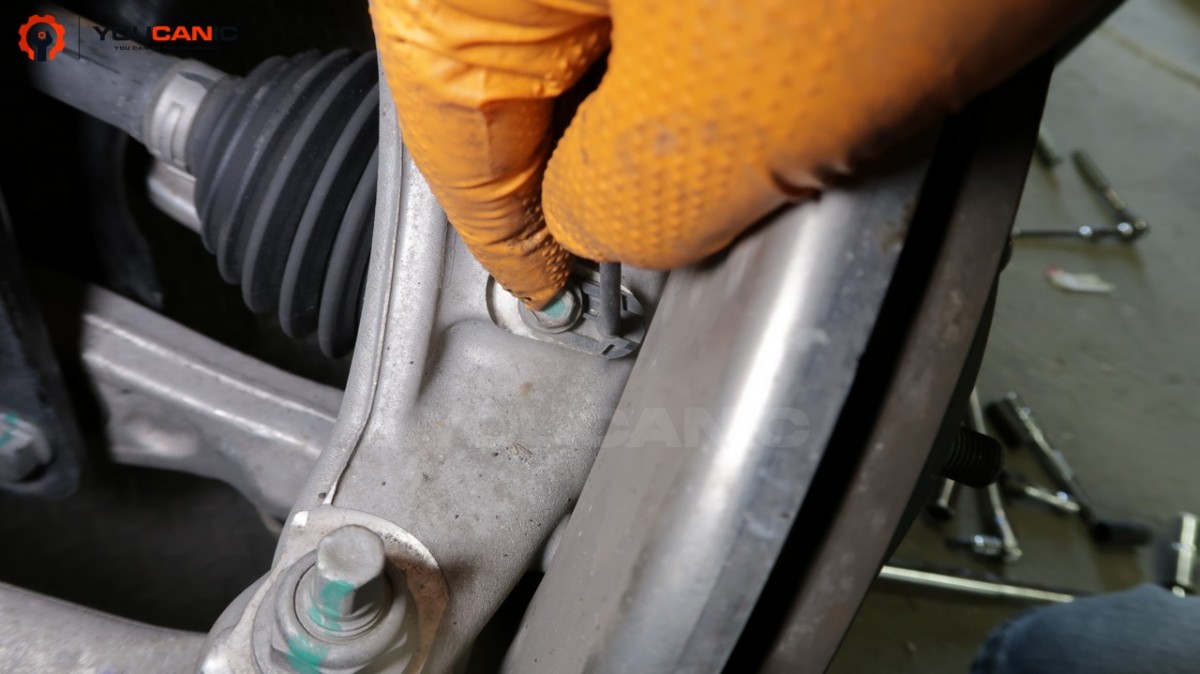
The ASC light can activate randomly or if the car isn’t maintained. Sometimes, the ASC Service Required light can be fixed by turning the car off and back on again. Check out the following components and use a diagnostic scanner to read the fault codes.
1. ABS Wheel Speed Sensor
The ABS sensor issue provides the ASC computer with information about wheel speed. There are four sensors, each at one wheel. The sensor can fail with time; therefore, checking for damaged wiring or loose connectors is wise. Sometimes, deep water or snow can disrupt the sensor readings, but this usually disappears quickly.
2. Brake Pedal Switch
Various onboard computers use brake pedal switch signals to determine if the brake pedal is pressed. Most cars don’t allow drivers to start the engine without pressing the brake pedal; a faulty switch will cause non-starting issues. And even if it starts, this will still trigger the ASC warning message.
3. Short
Brake light bulb issues, seemingly unrelated, can cause ASC warning messages. The cause can be something like corroded connectors or aftermarket LED bulbs with incorrect resistance. A blown brake light fuse will have an identical effect.
4. Misalignment / While size
Misaligned or unevenly worn tires and tires of different sizes may offset the steering wheel angle sensor or cause a difference in wheel spin speeds. The ASC computer won’t calculate correctly because the steering wheel or ABS sensor will provide implausible readings.
If equipped, this will also disengage the 4WD system to prevent damage. The ASC system is not crucial to operating the vehicle but is a good safety net when conditions become unsafe. If the ASC Service Required light activates and will not go off, take your car to a trusted mechanic or dealer and have them diagnose the problem.
How to Reset Mitsubishi ASC light
Troubleshooting the Mitsubishi ASC warning sight is easy but requires proper tools. To find out why your Mitsubishi ASC light is on, you will need to use an OBD-II ABS Scanner. Make sure the scanner can read ABS codes and works on Mitsubishi.
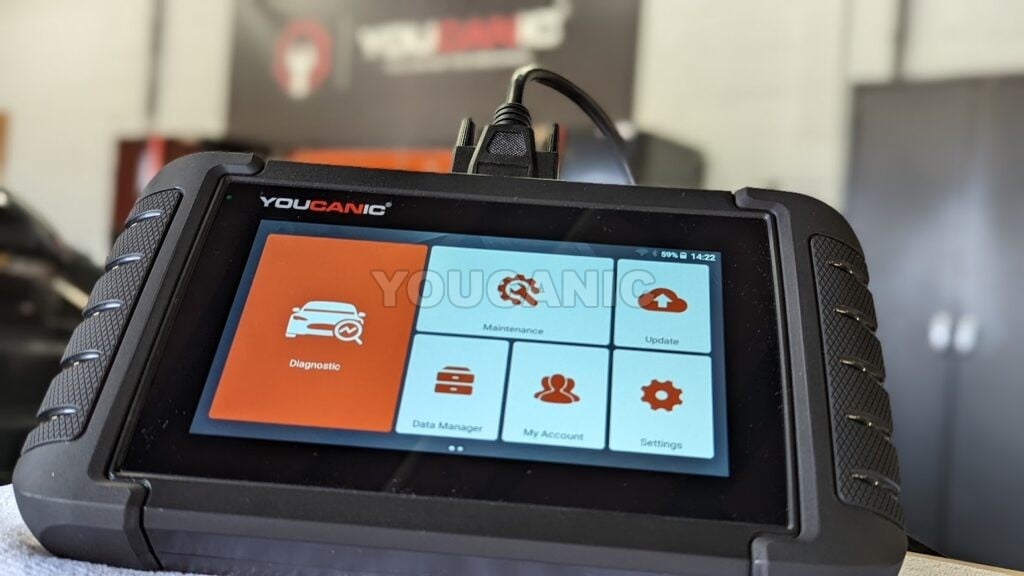
The YOUCANIC Full System Scanner can read and clear fault codes through every vehicle’s control module. Here is how to diagnose Mitsubishi ASC / ABS.
- Plug your ABS scanner into the OBD-II port under the dashboard.

- Turn on the ignition, but do not start the engine.

- Turn on your scanner.
- Select Mitsubishi from the main menu.
- Select the Anti-lock Brake System.
- Select Read Codes or Read DTCs, depending on the scanner.
- The scanner will display a diagnostic trouble code that describes the problem. Fix all codes that show current or present status. For now, ignore any codes that are stored (not active).
These steps work on any 1996 and newer Mitsubishi vehicles, including Galant, Outlander, Lancer, Montero, and Mirage equipped with ABS.
When you see the ” ASC Service Required ” warning message, it’s essential to have the vehicle inspected by a certified technician as soon as possible. A malfunctioning ASC system can negatively impact the vehicle’s stability and handling, leading to safety issues.
Frequently Asked Questions
How do I manually deactivate the Mitsubishi ASC System?
You can turn off the active stability control by pressing the “ASC” button on the dashboard for about three seconds. The ASC off light shows on the instrument cluster when the ASC system is deactivated. However, you should keep ASC on in most driving situations.
What is the ASC system in a Mitsubishi?
This system helps you to maintain control when driving and during emergency operations/activities.
What does “ASC system service required” mean?
This warning can be related to a damaged ABS sensor. The ABS and ASC systems lie on one module, resulting in a loss of anti-lock braking system.



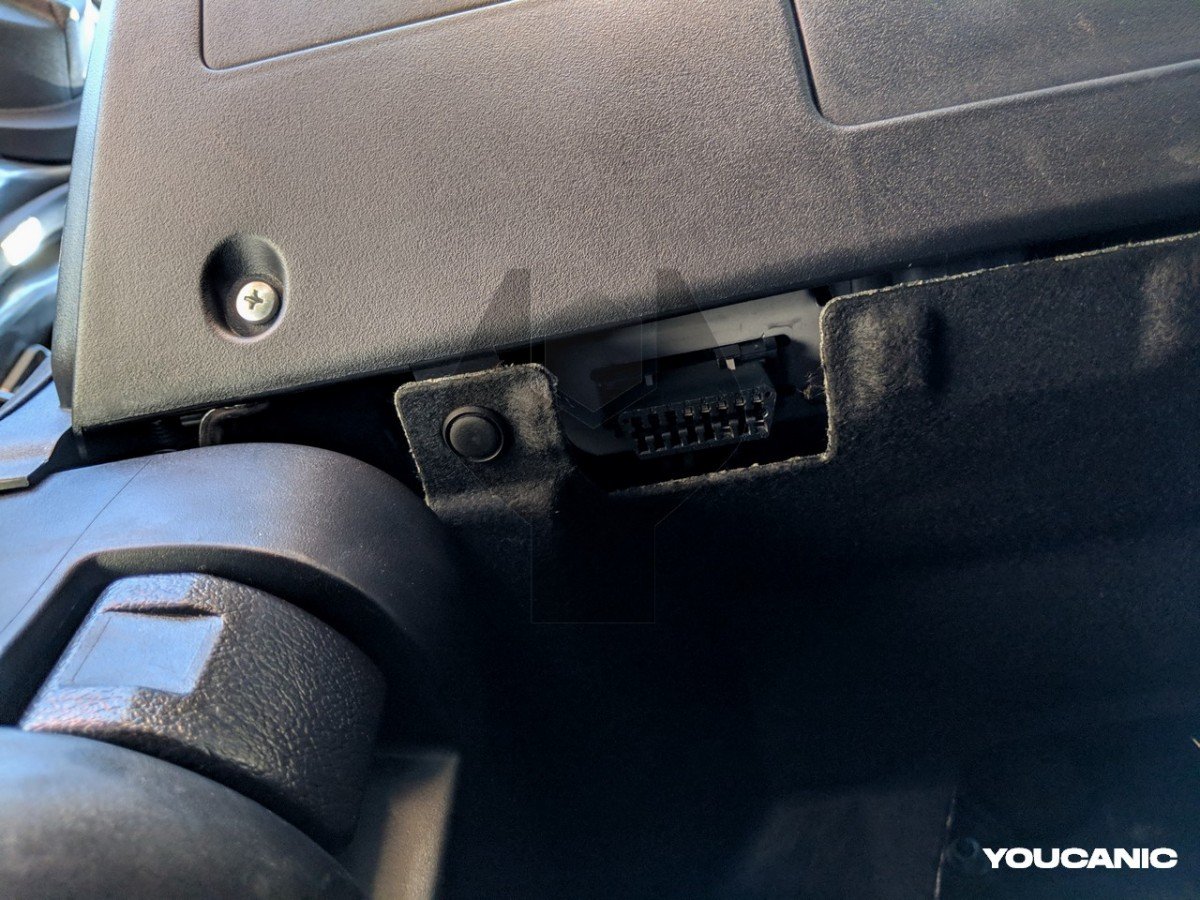
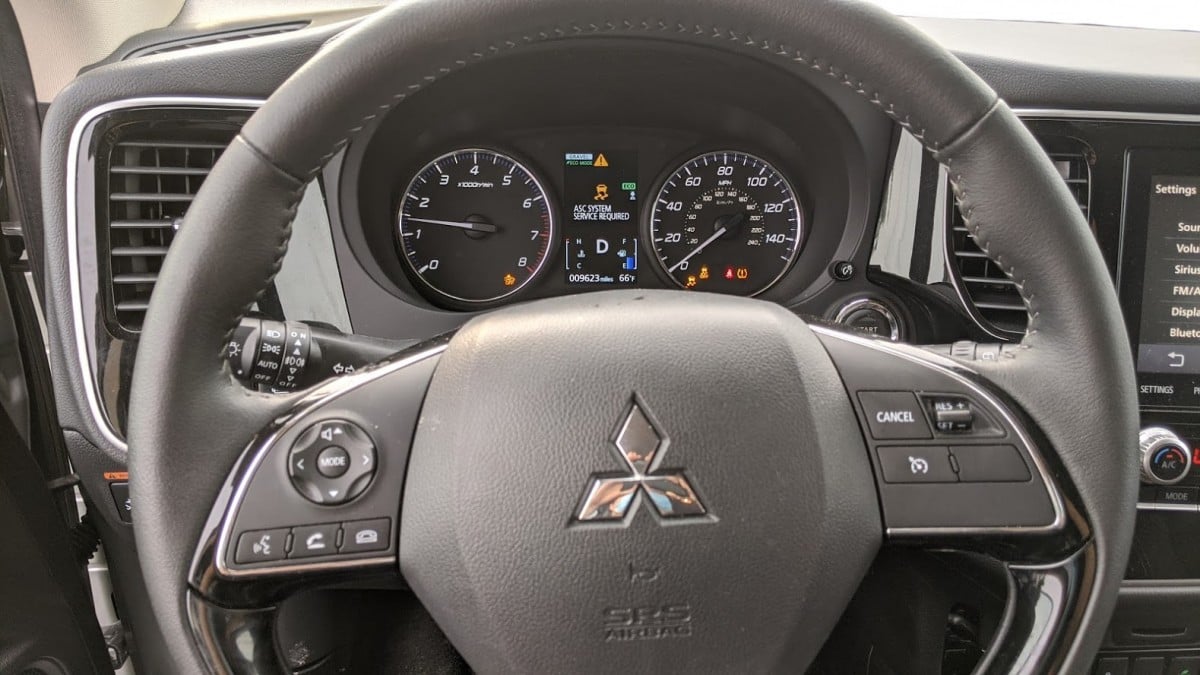
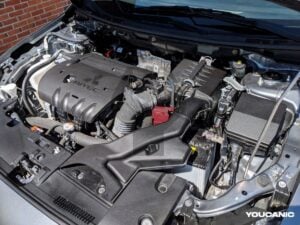





I am still suffering from this problem even though I have tried all the possibilities, and the diagnosis has always been that the accelerator pedal is faulty and sometimes the air control valve. It is worth mentioning that when the warning light appears, the car’s speed does not exceed 80km
Very Strange the ABS & ASC working fine Friday. I go to work on Tuesday drive 10-20 feet and ABS, ASC, Break System Needs Servicing even the Airbags need Servicing light goes on never seen that one before.
Most likely a bad ABS wheel speed sensor that is acting up intermittently. You need a scanner that can monitor the ABS wheel speed sensor as you drive. Then you can look at the values and see if one stops reading at times. There are lots of scanners out there including the YOUCANIC full system scanner. Also read the codes from the ABS wheel speed sensor.
When I start my car, system is checked the ABS, ASC lights go off. I back out of my driveway. I put it in (D) drive I go 10-20 feet and the ABS, ASC even the Air Bags check system light goes on. It’s been fine since late October. All my dealership does is reset the system only they have the codes. I think it’s something Electrical. Maybe the Battery?
My car won’t start because the dashboard is saying asc system service is required.
My car had this same msg pop up today. However, my car would not start engine wouldn’t even try to turn over. Roadside assistance hooked a diagnostic thing to my car which said my battery was full, but wasn’t functioning.